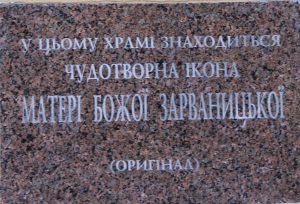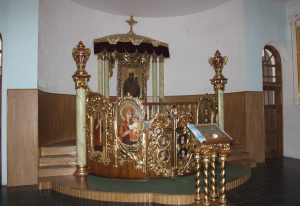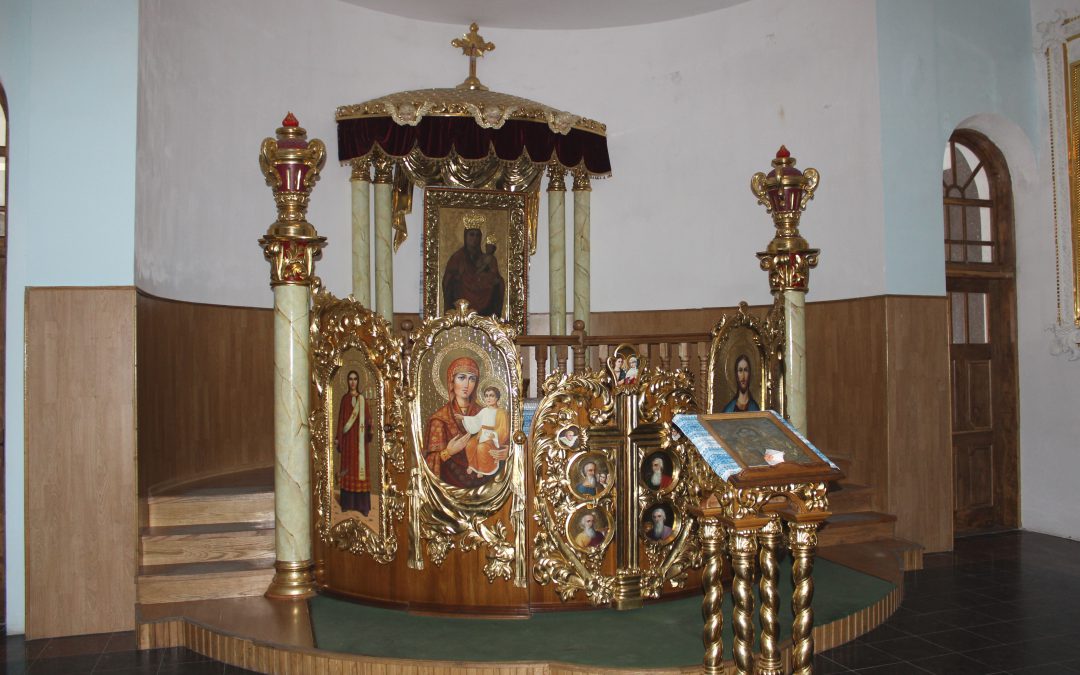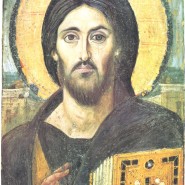By Jayne L. Buryn, Communications Coordinator, Ukrainian Catholic Eparchy of Edmonton
If physically, mentally and financially able, adherents of the Muslim faith are required to make at least one pilgrimage visit in their lifetimes to Mecca, birthplace of their prophet Muhammad.
Although not similarly obligated, Ukrainians also have sacred sites in Ukraine which they may visit voluntarily. The most prominent and recognized include:
- Kyiv’s Pochaiv Monastery,
- Pecherska Lavra in Kyiv, and
- Zarvanytsia in the Podilia region of Ukraine.
Most of these important spiritual places are associated with appearances of the Mother of God, the Theotokos, at or near these areas.

This chapel is the home of the original miraculous icon of the Zarvanytsia Theotokos
-Photo by Jayne L. Buryn
In a December 2017 post-synodal letter on “Prayer in the Life of the Church”
Patriarch Sviatoslav and the bishops of the Ukrainian Greek-Catholic Church emphasized the importance of prayer – personal and communal. “We especially want to note the practice of pilgrimages to holy places, which the Lord generously granted to Ukraine. The Lord blessed our Church with the freedom to pray, which we did not always have. At the same time, He gave us life — space and time to meet and communicate with Him. Let us use this gift!”
Pilgrimages “to sacred places became fairly common among Ukrainians after the introduction of Christianity and have remained a prominent public manifestation of faith.

Icon of the Mother of God (Theotokos) at Zarvanytsia
-Photo by Jayne L. Buryn
According to the Encyclopedia of Ukraine, vol. 4 (1993), pilgrimages “to sacred places became fairly common among Ukrainians after the introduction of Christianity and have remained a prominent public manifestation of faith. Although [during the Soviet occupation,] authorities actively discouraged pilgrimages, ruined many shrines, and turned others into museums, factories, or administrative buildings, this repression did not stem the annual flow of thousands of pilgrims.”
Faithful first travelled to Pochaiv, the second most popular site today after Kyiv’s Pecherska Lavra (cave monastery), in the 18th century. Today, other popular destinations include, Hoshiv in the Carpathian mountains, Krekhiv Monastery in the Buh River region, Transcarpathia’s Chernecha Hora, and Suceava and Khreshchatyk in Bukovyna, and the Boiko Church of the Three Saints in Hrushiv.
For more information on pilgrimage destinations and sacred sites in Ukraine, visit:
http://www.encyclopediaofukraine.com/display.asp?linkpath=pages%5CP%5CI%5CPilgrimage.htm https://sacredsites.com/europe/ukraine/sacred_sites_of_ukraine.html
From the prayer to Saint Anthony of Padua, Guide of Pilgrims: Dear Saint Anthony, we are all pilgrims. We came from God and we are going to Him. He who created us will welcome us at journey’s end.
We are “never alone in prayer” but “are united with [our] brothers and sisters in Christ. According to the testimony of Christ, ‘where two or three are gathered in my name, there am I in the midst of them’ (Matthew 18:20), prayer is most complete in its communal dimension.” The prayer of God’s journeying people reflects the mission of the Church — to always enter into the salvific presence of God.
Ukrainian Catholics from Alberta who have made pilgrimages have had “spiritually magical” experiences, such as that described by Teresa Makowecki in her article “A pilgrim shares her Medjugorje experience: It’s “spiritually magical”.
“Lord, teach us to pray” (Luke 11: 1)
The post-synodal letter on “Prayer in the Life of the Church” asserts that learning to pray is particularly important in today’s “world—which, on the one hand, offers a beautiful, unprecedented opportunity to humanity, and, on the other hand, presses on it with an avalanche of information and confuses with pseudo-values and ideologies ….”
From the domestic church, the family home, where children are taught, and engaged in, prayer by parents and grandparents to catechists, clergy, monastics, prayer fraternities, movements, communities and formative institutions, each Ukrainian Catholic has a responsibility for his or her “own life, for the life of the Church, and for the whole world.”
By His example of praying alone and with them, Jesus invited His disciples to communicate with God regularly. “The Divine Teacher also offers them a verbal example of prayer, the ‘Our Father,’ … the most important and most authoritative.
“(T)his prayer, from the mouth of the Lord Himself, reminds us that God is a loving Father who is close to people in all of their lives’ states, needs and difficulties, and it reminds us that a human person is a beloved child of God …” and a pilgrim on a journey towards our loving Father.


